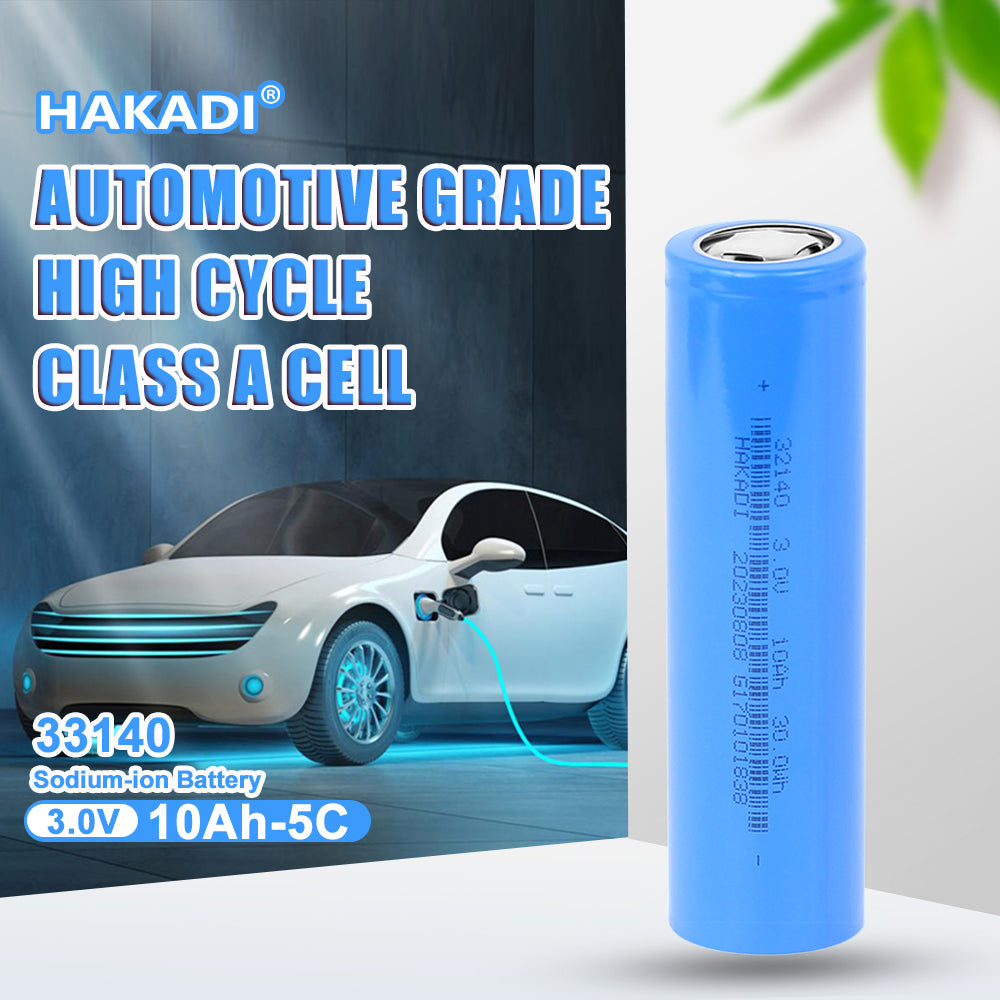#### Introduction
As the world seeks sustainable and efficient energy storage solutions, sodium-ion batteries are emerging as a promising alternative to the ubiquitous lithium-ion batteries. With their unique advantages and potential applications, sodium-ion batteries could play a significant role in the future of energy storage. But what exactly are sodium-ion batteries, and how do they compare to their lithium counterparts?
#### What is a Sodium-ion Battery?
A sodium-ion battery is a type of rechargeable battery that uses sodium ions (Na⁺) as the charge carriers instead of lithium ions (Li⁺). The basic structure and operating principle of sodium-ion batteries are similar to lithium-ion batteries. They consist of an anode, a cathode, an electrolyte, and a separator.
- **Anode**: Typically made from hard carbon or other suitable materials.
- **Cathode**: Commonly composed of sodium transition metal oxides or phosphates.
- **Electrolyte**: Usually a sodium salt dissolved in a suitable solvent.
- **Separator**: A porous membrane that allows ions to pass through while preventing short circuits.
#### How Does It Work?
The working principle of sodium-ion batteries involves the movement of sodium ions between the anode and cathode during charge and discharge cycles:
1. **Charging**: When the battery is charged, sodium ions move from the cathode to the anode through the electrolyte. Electrons flow through an external circuit to balance the charge.
2. **Discharging**: When the battery discharges, sodium ions move back from the anode to the cathode, generating electrical energy as electrons flow through the external circuit.
#### Advantages of Sodium-ion Batteries
1. **Abundance and Low Cost**: Sodium is the sixth most abundant element on Earth and is widely available in the form of sodium chloride (table salt). This abundance makes sodium-ion batteries potentially cheaper to produce compared to lithium-ion batteries, which rely on scarcer and more expensive lithium.
2. **Environmental Friendliness**: The extraction and processing of sodium are generally less environmentally damaging than lithium. Sodium-ion batteries typically use more eco-friendly materials and processes, contributing to a lower environmental impact.
3. **Safety and Stability**: Sodium-ion batteries tend to have better thermal stability and safety characteristics compared to lithium-ion batteries. They are less prone to overheating and thermal runaway, reducing the risk of fires and explosions.
4. **Wide Operating Temperature Range**: These batteries can operate effectively over a wide range of temperatures, making them suitable for various climate conditions and industrial applications.
#### Challenges and Limitations
Despite their advantages, sodium-ion batteries also face some challenges:
1. **Lower Energy Density**: Sodium-ion batteries generally have a lower energy density compared to lithium-ion batteries. This means they store less energy per unit weight or volume, which can be a limitation for applications where space and weight are critical factors.
2. **Cycling Stability**: While progress is being made, sodium-ion batteries still need improvements in their long-term cycling stability to match the performance of lithium-ion batteries.
3. **Infrastructure and Technology**: The sodium-ion battery industry is not as mature as the lithium-ion industry. More research and development are needed to optimize materials, improve manufacturing processes, and scale up production.
#### Applications
Despite these challenges, sodium-ion batteries are well-suited for several applications:
- **Grid Energy Storage**: Their cost-effectiveness and safety make sodium-ion batteries ideal for large-scale energy storage systems, helping to stabilize the grid and integrate renewable energy sources.
- **Backup Power Systems**: Sodium-ion batteries can provide reliable backup power for residential, commercial, and industrial applications, especially in regions with frequent power outages.
- **Electric Vehicles (EVs)**: While they may not replace lithium-ion batteries in all EV applications, sodium-ion batteries can be used in specific electric vehicle segments where cost and safety are more critical than energy density.
- **Consumer Electronics**: Ongoing advancements may eventually make sodium-ion batteries suitable for use in consumer electronics, offering a safer and more sustainable alternative to current battery technologies.
#### Conclusion
Sodium-ion batteries represent a promising and sustainable alternative to lithium-ion batteries, offering advantages in terms of cost, environmental impact, and safety. While they face challenges in energy density and cycling stability, ongoing research and development are likely to overcome these hurdles, paving the way for broader adoption.
As the demand for efficient and eco-friendly energy storage solutions continues to grow, sodium-ion batteries have the potential to play a significant role in the future of energy storage, contributing to a more sustainable and resilient energy landscape. Whether you are a researcher, industry professional, or simply interested in emerging technologies, understanding sodium-ion batteries is essential as we explore the possibilities of next-generation energy storage.

